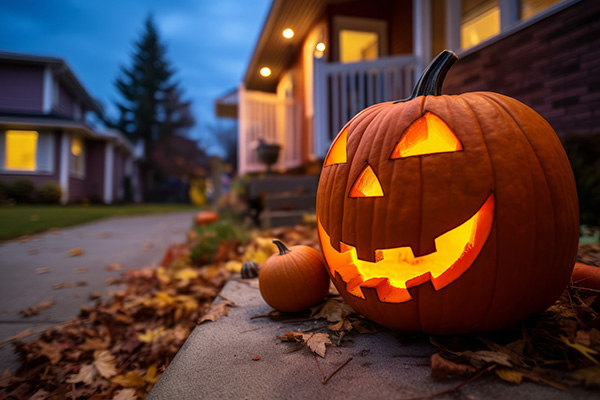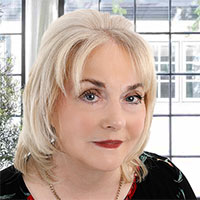The History And Hidden Blessings Of Halloween

As a child, I remember getting excited about dressing up as a witch on Halloween and enjoying all the treats, like toffee apples and spooky cakes, that my mom used to make.
But one year, my father ruined the holiday for me when he explained his views on the significance of Halloween to me. I was just 10 years old, and it upset me.
Because of his religious beliefs, my father then forbade my siblings and me from celebrating Halloween. This made us feel excluded from our community as we watched other children dress up and enjoy themselves.
As an adult, I learned that it was not the event itself that was the issue, but rather the assumed F.E.A.R. behind it: False Evidence Appearing Real.
Remembering those times recently, I was prompted to take another look into the origin of this holiday tradition and what it truly stands for.
On 31st October each year, the Celtic pagan festival known as Samhain is celebrated, symbolizing the end of the harvest period and the start of the winter season, sometimes referred to as the “darker half” of the annual 12-month cycle.
Long before it became a night of costumes and candy, it was a sacred festival rooted in ancient spiritual tradition. The celebration we now know as Halloween traces its origins to Samhain (pronounced Sow-in), a Gaelic festival that marked the end of the harvest and the beginning of the dark half of the year.
I think if human beings had genuine courage, they’d wear their costumes every day of the year, not just Halloween. Wouldn’t life be more interesting that way? And now that I think about it, why the heck don’t they? ~ Douglas Coupland
The Ancient Origins Of Halloween
Celebrated by the ancient Celts over 2,000 years ago, Samhain was more than just a seasonal turning point. According to legend, it is during this period that the veil between our physical world and that of the spiritual becomes thinner, thus allowing departed souls and other non-physical beings to cross over.
During Samhain, people honored their ancestors, lit sacred bonfires, and left offerings for wandering spirits in an attempt to fend off any evil spirits who may have come along for the ride. One could even dress up as a ghoul as a form of disguise! This is also how the tradition of carving of pumpkins and turnips came about. Apparently, it originated in Ireland, with the same intention of repelling negative spirit entities.
Samhain was a time of deep reverence and reflection, as the living sought to commune with the dead and receive guidance from the Other Side. The thinning veil allowed for communication with loved ones who had passed, and many traditions included divination, such as casting runes or reading the flames of the fire, to glean insights for the coming year. Believers would use nuts and apples to help predict their future spouse.
As Christianity spread through Europe, Samhain was gradually absorbed into the Christian calendar. By the 8th century, Pope Gregory III designated November 1st as All Saints’ Day, or All Hallows’ Day, to honor saints and martyrs. The evening before, October 31st, became known as All Hallows’ Eve and eventually shortened to Halloween.
With time, Halloween evolved through cultural blending, particularly as Irish and Scottish immigrants carried their customs to North America in the 19th century. There, it merged with other folk traditions and became more secular. Bonfires gave way to jack-o’-lanterns, spirit offerings transformed into trick-or-treating, and costumes shifted from protective disguises against spirits to playful expressions of fantasy and fear.
Halloween wasn’t always fun. To the ancient Gaels, who seem to have originated it, Halloween was deadly serious. By October’s end, the dark came early, the cold never left and death dwelt nearby. Surviving the coming winter demanded attention ~ Ed Schmidt
The Modern Myths & Relevance Of Halloween
Over the years, Halloween has had a lot of bad press, in that particular religious groups have formed the opinion that Halloween is all about witchcraft, the occult, summoning demons, creating pacts with the Devil. The traditional games associated with it are even referred to as vandalism rather than mischievous acts.
Furthermore, Halloween has been commercialized, and certain films have portrayed it as being sinister, with some violent scenes in films tending to reinforce Halloween as being an adverse event rather than the positive experience it could be.
Never in my many years as a practicing psychic have I ever heard of anyone coming to any significant harm by going to a Halloween party! It is essential, therefore, that we dispel any fear and remember that many of our fears, whether they be about Halloween or something else, are generally just fears that have no real substance. Look for any evidence to warrant the fear, and you more than likely will not find it.
Beneath the surface of modern festivities, the spiritual roots of Halloween endure. It remains a sacred tradition inviting us to explore themes of death, transformation, and rebirth. For many, it is still a night of ancestor veneration, personal reflection, and energetic release.
Whether you’re setting an intention, lighting a candle for a departed loved one, or simply admiring the golden leaves of autumn, Halloween is a mystical reminder of our connection to the unseen realms and the eternal dance of light and shadow within us all.
Now these old superstitions sometimes prove to have a germ of truth in them, which some philosopher has doubtless long ago, in forgotten ages, discovered and made known ~Nathaniel Hawthorne
The Hidden Benefits Of Halloween
Is Halloween all about evil and darkness? I would beg to differ. Halloween holds deeper gifts for those willing to look beneath the fear and superstition. Consider some of the quietly transformative benefits this season offers:
Fostering Community Connection: Halloween can serve as a beautiful catalyst for positive community growth. From neighborhood decorations to shared laughter and storytelling, it encourages connection, cultivates goodwill, and reminds us to love and appreciate those who live around us.
Overcoming Fear Through Play: This season gives children and the child within all of us a chance to face the unknown in a safe and playful way. Dressing up, visiting unfamiliar houses, and engaging in imaginative play can gently chip away at irrational fears while sparking creativity and wonder. It also helps build a sense of belonging through shared rituals and joyful participation.
Building Confidence In Children: Games like Trick-or-Treating do more than entertain. They also empower. Children learn to approach strangers politely, navigate unfamiliar environments, and face the eerie unknown with courage, all while building confidence and interpersonal skills that can serve them for a lifetime.
The Joy Of Healthy Escapism: In a world that often feels too heavy, Halloween offers a light-hearted reprieve. With costumes, laughter, and seasonal delights, it provides a touch of whimsy that helps relieve stress, spark joy, and restore balance. Escapism, in moderation, can be a deeply healing form of self-care.
Increased Spiritual Awareness: At its core, Halloween is a time of deep introspection. It beckons us to contemplate the mysteries of life, death, and rebirth. It reminds us that we are more than flesh; we are souls on a sacred journey. This season can inspire us to honor the unseen, connect with loved ones who have passed, and embrace the eternal cycle of transformation.
Honoring Our Ancestors: Samhain, the spiritual root of Halloween, is traditionally seen as a time when the veil between worlds is thinnest. It invites us to light a candle for our ancestors, to remember their wisdom, and to offer gratitude for their presence in our lives, both past and present.
Embracing The Enchantment Of Autumn: Halloween arrives as the veil of autumn begins to descend. It invites us to pause and take in the magic of falling leaves, golden sunsets, and crisp twilight air. Symbolically, it’s a time to release what no longer serves us, to turn inward, and to gently prepare for personal transformation. just as nature herself does.
Halloween needs to be seen as the ideal time for children to unleash their mischievous side (for once!), become more creative and spontaneous, and for adults to reconnect with their inner child and develop their spiritual side.
It is essential to remember that darkness can only exist without the presence of light. So, why not light up your Halloween partythis year with some beautiful candles and let your positive light shine in the world? After all, there should be nothing to fear in doing so.
|
|

Leave a Reply